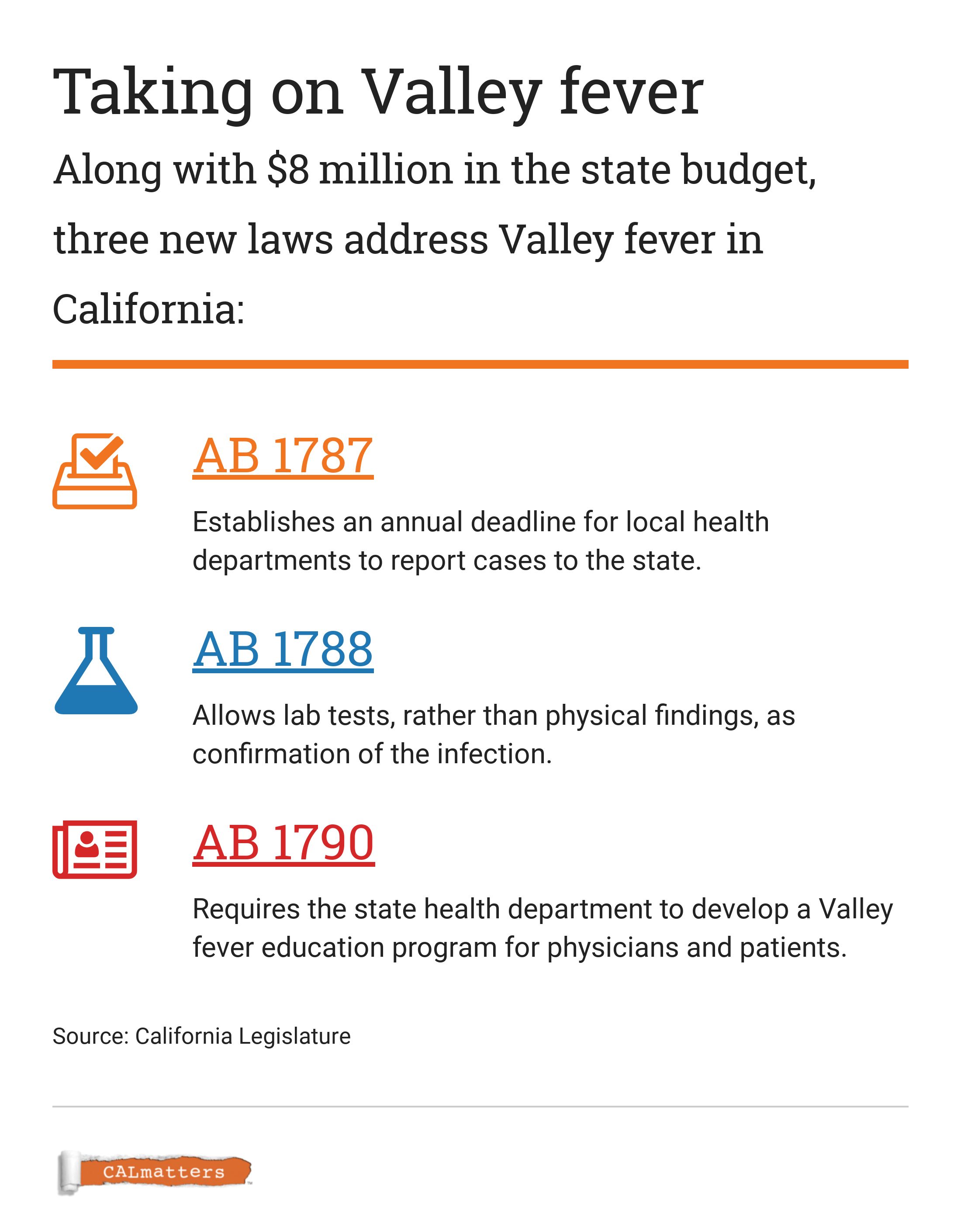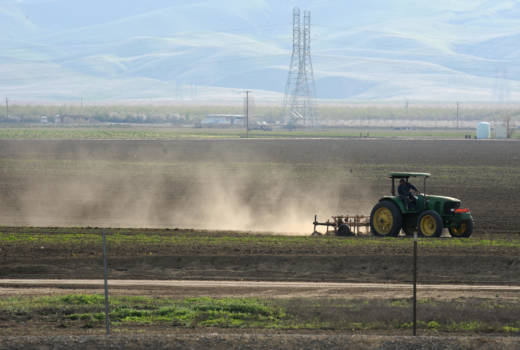Valley fever season starts this month. Most cases surface between September and November, but through August this year more than 5,000 cases were reported in California, putting the state on pace for a new record.
“We’re seeing a huge increase in new cases in the past two-and-a-half years. It’s striking,” said Ian McHardy, co-director of the Center for Valley Fever at UC Davis. “We’re seeing double and triple the cases. It’s a catastrophic change, and it’s getting worse.”
The fungus typically infects the lungs after spores are inhaled (it is not contracted person-to-person), producing a persistent cough and chest pain or other flu-like symptoms that can require months of treatment. In some cases—like Purdie’s—it can spread. It can be hard to diagnose because it can mimic those of other ailments, and in many people symptoms fade away on their own.
This month, Gov. Jerry Brown signed three bills into law to help combat Valley fever. The current state budget includes $8 million for research and education, to keep more Californians from catching the infection and to foster better diagnoses so symptoms can be treated accurately.
But despite the state response, experts say the disease likely will continue to expand, with more people getting it in more areas of the state.
One big reason, McHardy said, is climate change. A growing number of dust storms in California have spread the fungal spores far beyond the Central Valley, where the infections traditionally have been concentrated.
“We know there’s a direct correlation between these dust storms and Valley fever, and we know climate change is increasing the extreme weather patterns here, including the dust storms,” he said.

Valley fever is no longer strictly a Valley phenomenon. It has spread north to Sacramento and west all the way to the coast.
“(In places) like Monterey, Los Angeles and San Luis Obispo counties, where we don’t expect to find it, it’s becoming much more common,” McHardy said.
Democratic Assemblyman Rudy Salas Jr. of Hanford wrote the three Valley fever bills the governor signed. He said the infection has been reported in 53 of California’s 58 counties, and he has family members and friends who have contracted it.
The state’s health care costs have spiraled higher with the increase in infections, he said. “The costs to our health care system … were around $2 billion” in a 10-year period ending in 2011, Salas said, citing the most recent state cost study. “And we have only seen an increase in cases since then.”
The $8 million is “the largest allocation in our state’s history specifically targeting Valley fever,” he said. About $3 million of it will go toward expansion of the Valley Fever Center in Kern County and its research on why some people who inhale the fungus get sick and others don’t.
Because Valley fever can resemble the flu, many physicians outside of the Central Valley don’t consider it in their diagnoses, even though the blood test to identify it is inexpensive and simple.
The federal Centers for Disease Control and Prevention estimated there are about 150,000 undiagnosed cases a year, and McHardy said he thinks the number is higher.
The most dangerous manifestation is meningitis, he said—“and by the time they go to the hospital it’s too late, and I think a lot of people die from it without ever being diagnosed,” McHardy said.
The California Department of Public Health doesn’t regularly track deaths from Valley fever but did compile statistics in one study. Officials concluded that 1,098 people died of the disease in California from 2000 to 2013, averaging about 73 deaths a year statewide.
The downside is obvious and can be terrifying, Purdie said. But he circled back to the bright side, saying that educating both patients and physicians to better recognize the infection could make a huge difference. Once people figure out they have Valley fever, especially in the earlier stages of the infection, he noted, it’s treatable.
And “fortunately,” he added, “most people won’t get it as severely as I did.”
CALmatters.org is a nonprofit, nonpartisan media venture explaining California policies and politics.

